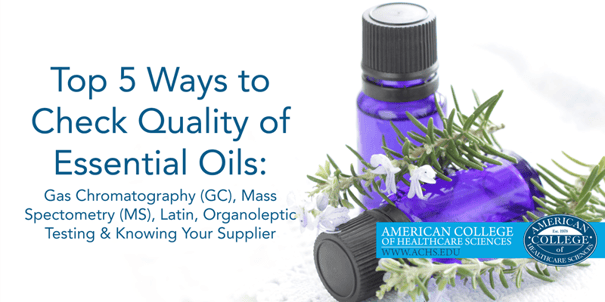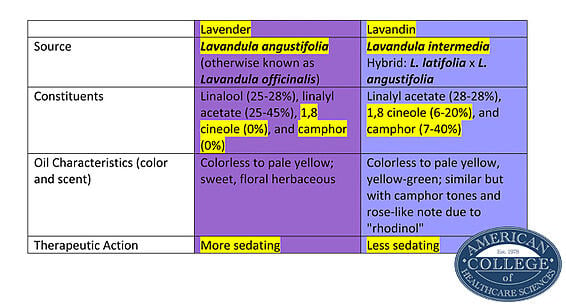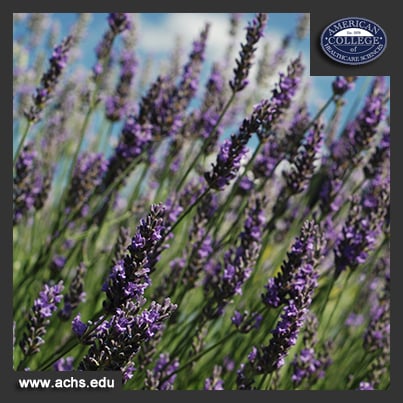
Just like a fine wine, a number of factors affect the quality of an essential oil, including:
- The botanical origin of the essential oil
- The part of the plant used
- The climate where the plant was grown
- The cultivation and harvest techniques
- The time of harvest
- The method of oil production, and
- The method and length of storage after production.
When an essential oil is intended for clinical aromatherapy purposes, the specific botanical sourced and its quality become even more important; a positive outcome is a direct result of the constituent profile and quality of the oil (and of course the skill of the professional aromatherapist).
As with any investment, it’s important to identify best practices for evaluating and purchasing essential oils, particularly when buying essential oils for clinical aromatherapy use. Here are my top five assessment tools to determine the quality and potential of an essential oil for clinical aromatherapy—a skill that is both an art and a science.
1. Gas Chromatography (GC) and Mass Spectometry (MS)
Gas chromatography (GC), mass spectrometry (MS), and similar additive-revealing techniques can analyze the constituents in oils. Ever wondered how a GC really works? It is a technique that separates the components of an essential oil according to the differences in molecular volume. It provides a fingerprint of the oil, and as I said, it can reveal additives, but it is not always conclusive.
A GC will identify the presence and relative quantities of chemical constituents within an essential oil.
Very simply, the steps are as follows:
- The essential oil is introduced into the injection chamber where it is vaporized.
- It is then transported by helium to a column where it enters a stationary phase. The rate of movement through the stationary phase of each compound varies.
- The molecules separate and are sent to a vacuumed ionization chamber where electronic bombardment gives a recording of the quantities.
The next stage of obtaining a more definitive reading and identifying the components (and potentially revealing the presence of adulterants) requires an experienced technician who can carry out the analysis and interpretation of the MS.
This is a device in which molecules are ionized and the accelerated ions are separated according to their mass-to-charge ratio. An ion is an electrically charged particle or group of atoms. The MS measures the positive or negative ion currents determining molecular weight. The results are recorded graphically or as a computer output. Each peak is compared with a database, which contains about 75,000 spectra. So the mass spectrometer (MS) can measure the presence and quantity of chemical constituents.
The downside is GC/MS testing is expensive. Ideally, a GC/MS should be conducted for each batch, as natural factors will affect each batch of essential oil and we're looking for constituents to be within certain ranges. The cost can be prohibitive for small distillers, who may make very high quality essential oils but not be able to pass on the cost to have a GC/MS for each batch.
In addition, reading a GC/MS requires skill and experience, and it is important to have an understanding of what pharmacological constituents you are looking for to compare it to. You need to have the "standard" or accepted ranges for each constituent to determine whether your particular sample fits these ranges. (Remember that a GC/MS cannot always detect specific synthetic diluents nor even specific diluents of natural origin.)
So you may be wondering is it worth it. The answer is a resounding yes! A GC/MS can detect if two or more oils with similar chemical composition have been mixed together, if an oil has had the terpenes removed, or if an oil has been rectified. It will also reveal traces of solvents or mineral oils.
As an aromatherapist, it is important to realize that a GC/MS is not always a guarantee of quality but it is a great start, and it is also important to note that one test does not replace another. If you can, make use of all available best practices and tests in combination to evaluate the quality of an essential oil.
2. Know Your Supplier
Another great resource for aromatherapists and consumers to help ensure that essential oils are of a therapeutic quality and optimal for clinical aromatherapy is to develop a relationship with a supplier that can be trusted.
American College of Healthcare Sciences (ACHS) encourages aromatherapy students and graduates to talk with suppliers who either distill their own material, deal directly with reputable distillers, or buy from a company that does.
I would also encourage you to work with suppliers who will provide a small sample (a small fee is reasonable if you are not a large buyer) of the oil to perform independent testing on before purchasing larger quantities, especially if a GC is not immediately available.
3. Not All Plants Are Created Equal: Know Your Latin Names
As a consumer, if you are purchasing 5 or 10 ml bottles of essential oils, one of the simplest things you can do to be certain you are purchasing the right essential oil is to read the label. Many plant names around the world also have similar common names, but they are not all created equal and can produce different results. A good tip is to always purchase by Latin name, and always check for the correct botanical name.
Looking to curl up and relax with some lavender aromas? This plant is a good example of the importance of Latin names.Lavandula angustifolia, also referred to as “true lavender,” is the preferred lavender for clinical aromatherapy—not lavandin Lavandula intermedia.
While L. angustifolia should have a higher content of the anti-inflammatory and sedative ester, linalyl acetate, it is the camphor constituent that most differentiates L. angustifolia from L. intermedia. True lavender has almost no camphor, or it is completely absent, whereas L. intermedia can have up to 40%, depending on the variety.
It's very important to identify the oil specifically by Latin name—especially since L. intermedia has its own therapeutic uses and must not be interchanged with L. angustifolia. Camphor is a ketone known to have a stimulating effect. In addition, 1,8 cineole (also known as eucalyptol or cajuputol) also has a stimulating effect. Since lavender’s reputation is primarily that of a sedative, the therapeutic results can be disappointing if the two lavender essential oils are used interchangeably. This means that if you purchase lavender using just the common name, you could end up with an oil that will keep you or your client alert rather than lulled off into relaxation. So if I say "lavander" and you buy "lavandin," they are definitely not the same thing.
Check out the chart below for other differences. You can see how it can get confusing.

4. Trust Your Nose: Organoleptic Testing
Aromatherapists are also trained in organoleptic testing to help identify potential adulterants and extenders. The sense of smell, taste, feel, and look of essential oils can expose important information about its quality and whether it should be used in clinical aromatherapy. I discuss this in a little more in depth in my previous blog post, Quality of Essential Oils: Diluents, Extenders, Synergy...Oh My! Students pursuing accredited aromatherapy training with ACHS receive extensive experience with organoleptic testing but anyone can do it. Start building your organoleptic skills.
During the ACHS Study Abroad programs we spend time during our private coach trips doing just this. The "What Smell is This" is one of our favorite educational experiental activities!
5. Check the Price Tag!
There is an awareness that a price that is very low comparatively may indicate that an oil is not sourced from the correct plant or part of the plant, or that it is diluted in a base oil, or is otherwise adulterated.
The more expensive oils, specifically sandalwood Santalum album (L.), rose Rosa damascena (Mill.), and neroli Citrus aurantium (L.) var. amara, are frequently sold in the retail sector diluted in a base oil, such as sweet almond oil or fractionated coconut oil. Transparency is the key here and the label should identify the diluent. If it is not on the label, there are simple tests you can try. For example, dropping a few drops in water will usually reveal a diluent as the water will turn cloudy, and the essential oil will have an oily feel and slower evaporation.
Similarly, these expensive oils especially sandalwood S. album may be sourced from the supplier already adulterated with a diluent. Adulterated or extended oils will not have a predictable therapeutic benefit, and they can even have harmful physical effects.
But always remember that a higher price does not necessarily mean a higher quality. All oils should be checked thoroughly regardless of the price.
Now that we've covered adulterants and the top 5 ways to check quality in the Quality of Essential Oil series, be sure to check back soon and subscribe to the blog for my next blog post in the series on environmental and sustainability concerns!
This article is for informational purposes only. It is not intended to treat, diagnose, cure, or prevent disease. This article has not been reviewed by the FDA. Always consult with your primary care physician or naturopathic doctor before making any significant changes to your health and wellness routine.
What are your tips for novice aromatherapists or aroma-enthusiasts? Share them in the comments!





